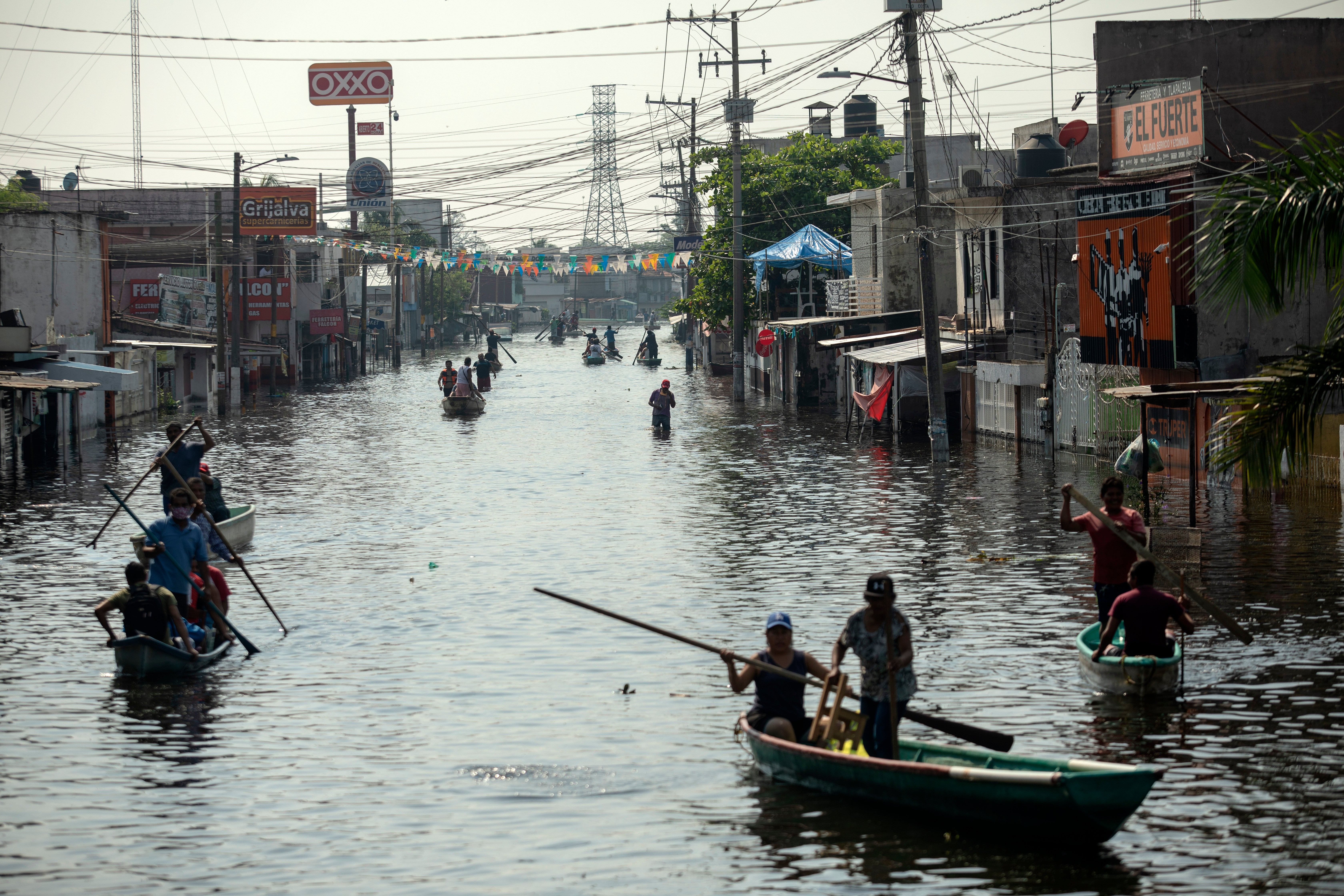Mexico explains decision to flood poor, Indigenous areas
Mexican President Andrés Manuel López Obrador says he had to face a tough decision on whether to allow a big city to be flooded, or to direct excess water to poorer, more sparsely populated Indigenous areas

Your support helps us to tell the story
From reproductive rights to climate change to Big Tech, The Independent is on the ground when the story is developing. Whether it's investigating the financials of Elon Musk's pro-Trump PAC or producing our latest documentary, 'The A Word', which shines a light on the American women fighting for reproductive rights, we know how important it is to parse out the facts from the messaging.
At such a critical moment in US history, we need reporters on the ground. Your donation allows us to keep sending journalists to speak to both sides of the story.
The Independent is trusted by Americans across the entire political spectrum. And unlike many other quality news outlets, we choose not to lock Americans out of our reporting and analysis with paywalls. We believe quality journalism should be available to everyone, paid for by those who can afford it.
Your support makes all the difference.Mexican President Andrés Manuel López Obrador said Monday he had to face a tough decision on whether to allow a big city to be flooded, or to direct excess water to poorer, more sparsely populated Indigenous areas. The president, whose slogan has always been “the poor come first,” chose the latter.
“It hurts me a lot,” López Obrador said, while noting “there would have been a lot more people affected" had the city of Villahermosa been flooded. He promised to drag river channels and reduce the focus on hydroelectric power production at a dam whose outflow contributed to the problem.
López Obrador defended his decision to open strategic floodgates, saying it avoided a major flood in Villahermosa, the capital of the Gulf coast state of Tabasco and home to over 350,000 people.
Tabasco is the president's home state, and heavy rains there have affected about 161,000 inhabitants whose homes were flooded or had to be evacuated.
But he said on Sunday that when a dam in Tabasco reached capacity, water had to be released and “we had to choose the lesser of two evils, and not flood Villahermosa.”
“That later hurt the people of Nacajuca and the Chontal (Indigenous) region, the poorest people, but we had to make a decision,” López Obrador said. The largely rural township of Nacajuca has about 83,000 inhabitants.